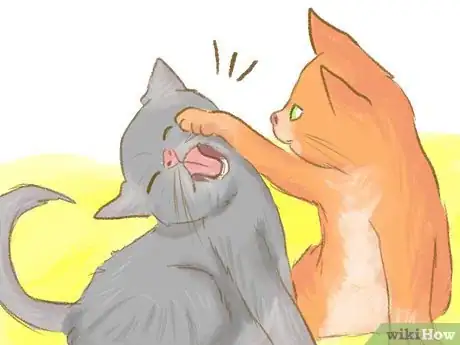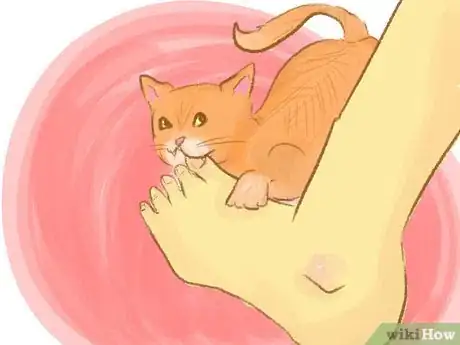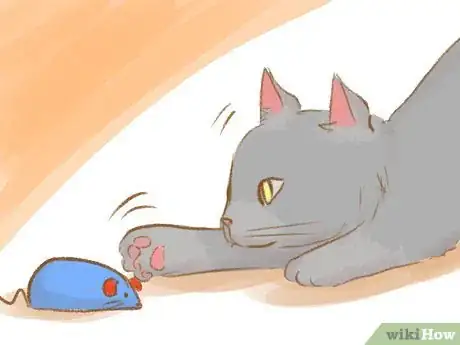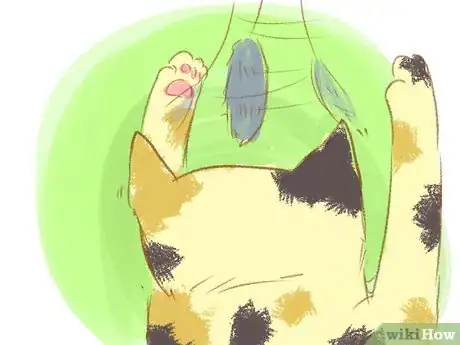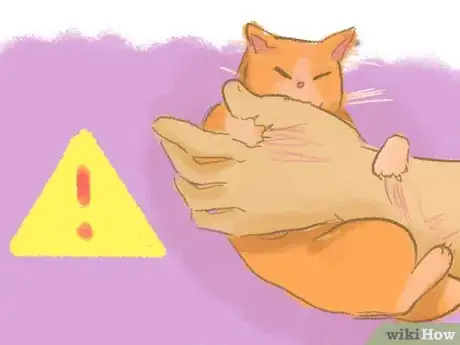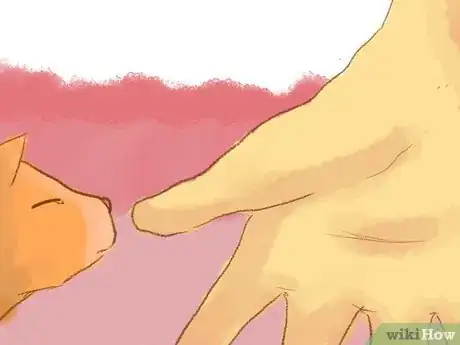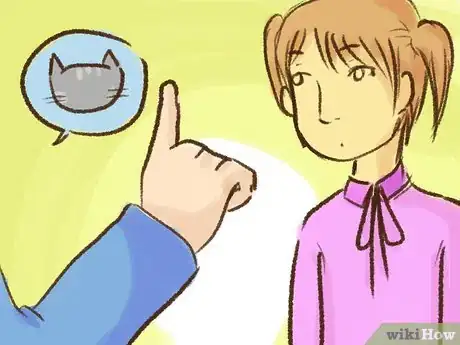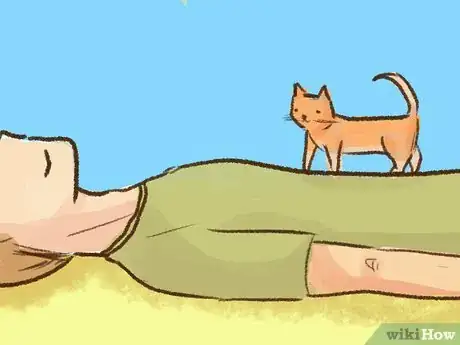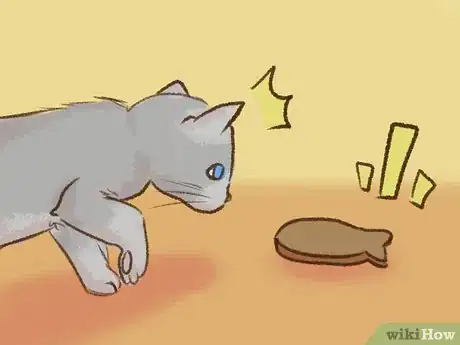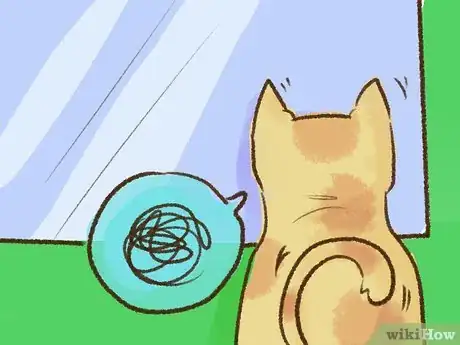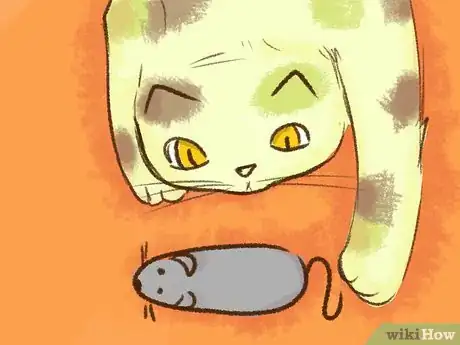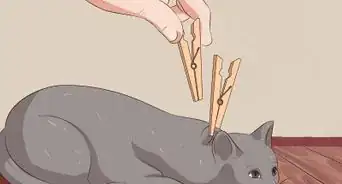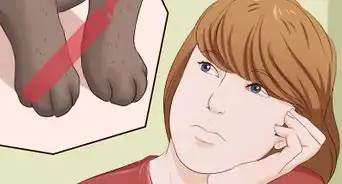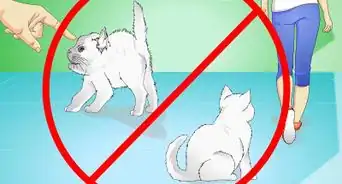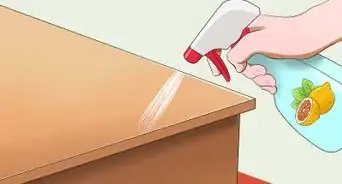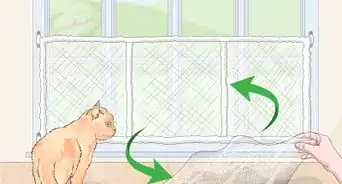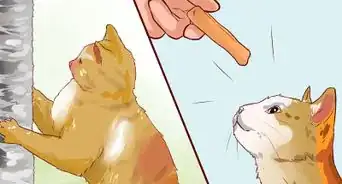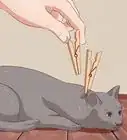This article was co-authored by Lauren Baker, DVM, PhD. Dr. Lauren Baker is a Veterinarian and Assistant Scientist at the University of Wisconsin-Madison. With over 10 years in veterinary medicine, she specializes in the concept of “one health,” which uses insights from veterinary medicine to help human medical research. She holds a Ph.D. in Comparative Biomedical Sciences, a Doctor of Veterinary Medicine, an MS in Comparative Biomedical Sciences, and a Bachelor’s degree in Psychology from the University of Wisconsin-Madison.
This article has been viewed 69,258 times.
To stop a kitten from biting, it helps to have an understanding of why she feels the need to attack in the first place. The key to successful retraining is identifying your kitten’s motivation. Kittens generally bite for three main reasons: she is agitated, she is caught up in the heat of playing, or she is afraid. With a little patience, your kitten can be taught to stop biting and to adopt better habits instead.
Steps
Dealing with Misdirected Play Behavior
-
1Understand that kittens learn how to play gently from their littermates. A vital part of a kitten’s early life is biting her littermates. It is through bites and scratches from her fellow kittens that she learns what hurts and how to kill things.[1]
- If a kitten is deprived of this early experience, for example if she is hand-reared, or a lone kitten, then she is less likely to have a concept of what is painful and what isn’t.
-
2Be aware that a kitten will chase and bite your feet because she is dealing with her natural hunting instincts. It is a kitten’s natural instinct to chase anything that moves in training for hunting prey (even though she will most likely never have to hunt). As she reaches around twelve weeks of age instinct tells her to bite prey to kill it. Eventually, the scenario arises where she chases moving objects, such as human feet or hands, and then bites them.
- Unfortunately, the kitten’s behavior can be reinforced by the reaction of her victim. You are bitten and react with fear, it reinforces your young cat’s instinct to chase and bite her quarry.
Advertisement -
3Tire your kitten out by playing games with a toy on a string to keep yourself safe from bites. Kittens are geared for bursts of wild energy and this is when they lose their inhibitions about biting. The trick is to channel this energy safely away from your hands and feet, by getting the kitten to play vigorous games of chase with a toy on a string. Tire her out with the toy while keeping your hands and feet at a safe distance.[2]
- A kitten can normally play in bursts for 5 to 10 minutes and then she will have to stop and lie down. Only pet her once she is calm again, and then reward this calm behavior with small food treats.
-
4Keep your kitten from getting bored as much as possible. When kittens get bored, they build up excess energy that can lead to wild bursts of biting frenzy targeted at your feet. Provide her with plenty of toys and switch up which toys are available for her to play with so that the toys seem new and exciting each time you rotate them.[3]
- There are lots of automated toys on the market that are battery operated and can be programmed to start moving at certain times, hence catching her attention and keeping her mentally stimulated even when you are out.
-
5Redirect or disengage if your kitten bites you. Teach your kitten that you will not engage in aggressive play. If the kitten does bite you, say “no” in a firm voice, and pull your hand away. Give them a toy to play with instead. Don’t go back to petting them or letting them play with your hands until they have calmed down.[4]
-
6Break the biting habit with a bitter taste. If your kitten absolutely will not stop biting you, try putting a bad-tasting but non-toxic substance on your hands before playing with or petting the kitten. The kitten will quickly come to associate biting you with a nasty taste. You can get bitter apple or bitter cherry spray for this purpose at most pet stores, or at your vet’s office.[5]
Controlling Fear-Induced Biting
-
1Never cut off your kitten’s escape route. A trapped kitten will feel overwhelmed and bite as a means of defense. If she has gone to ground, leave her be. Pulling her out from under a bed will only intensify feelings of fear and reinforce that she is right to be frightened.[6]
- If your kitten is hiding because she got scared, place some food or a treat within her reach and leave the room. When she perceives the threat has gone, she will then have a reason to come out that will also reward her ‘bravery’ for coming out of her hiding place.
-
2Try to build a relationship between your kitten and children. As odd as this may sound, kittens and children can have a hard time getting along. This is because children have a hard time understanding that kittens need to be handled gently, and don’t always like to be picked up. If your kitten is frightened of children, help her get over these feelings. You can do this by:
- Teaching your kids to be gentle with the kitten. You can do this by modeling gentle and appropriate petting and playing behavior. Explain in simple terms how to touch the kitten, e.g., “Hand flat when you pet the cat!” or “Use nice, soft touches, like this.” Praise your kids when they pet and play with the kitten appropriately.
- Having your children give treats to the kitten. This will help the kitten learn to associate your kids with good things.
- Feeding the kitten in one half of the room, while the kids sit in the other half of the room and ignore her. Explain to your children that they should never disturb the kitten when she is eating because she might see them as a threat. By learning that the children are not a threat (to herself or to her food), she will gradually view them with less fear and begin to associate them with nice things (like eating food).
- Always supervising your kids around the kitten, and intervening if necessary.
-
3Ignore your kitten to build her confidence. Cats may feel threatened by direct eye contact. Thus, an anxious kitten may misinterpret you looking at her as a threat, rather than as affection or concern. To help build your kitten’s confidence[7] :
- Lie flat on the floor. A human standing up is an intimidating thing for a small animal.
- Turn your head away from your kitten. If your kitten approaches, do not turn and look, but let her investigate in her own time. This will make her more comfortable with you.
-
4Reward ‘brave’ behavior. Positive enforcement of exploratory behavior will help teach the fearful kitten that new experiences can be good. To do this carry a bag of cat treats with you. If you notice the kitten venturing out from behind the sofa, casually drop a treat within her reach so that she associates the big, wide world with nice things like food.
Dealing with an Agitated Kitten
-
1Understand that redirected aggression is one of the most common reasons for your kitten to be agitated. Redirected aggression is responsible for half the attacks by cats on people[8] . It occurs in kittens when they get frustrated. When a kitten becomes aroused to the point of attack but cannot to do anything about it so she redirects her pent up emotion to the next closest thing. Often this is the person who disturbs her, and she lashes out and bites.
- For example, if your cat sees a bird out the window but can’t attack because there is a window pane in the way, she may redirect her anger to the next thing that moves or disturbs her, like your foot.
-
2Redirect your kitten’s agitation with a toy. When you recognize signs of agitation, you should also try to redirect your kitten’s frustration towards a toy. Once that pent up frustration is channeled in a more appropriate direction, she will become her friendly kitten self once more.
- Toss your kitten a catnip mouse or get her chasing a toy on a string.
-
3Recognize signs that your kitten has become agitated in the future. The key to remaining bite-free is to put some distance between yourself and your kitten when you notice her becoming agitated, frustrated, or scared. Signs that you cat is agitated and may bite include[9] :
- Flattening ears.
- A flicking tail.
- Skin twitches.
- Wide, staring eyes.
- Fluffed up coat.
- Vocalizing low growls.
Warnings
- Do not leave small children and kittens alone together because there is a good chance that your child will do something that will frighten the kitten, resulting in a bite.⧼thumbs_response⧽
References
- ↑ Cat Behavior and Training. Ackermann. Publ: TFH Publications.
- ↑ http://behavior.vetmed.ucdavis.edu/local-assets/pdfs/Managing_Your_Kitten_rough_play.pdf
- ↑ http://www.humanesociety.org/animals/cats/tips/kitten_play.html
- ↑ http://www.humanesociety.org/animals/cats/tips/kitten_play.html
- ↑ http://www.humanesociety.org/animals/cats/tips/kitten_play.html
- ↑ Cat Behavior and Training. Ackermann. Publ: TFH Publications.
- ↑ Feline Behavior: a guide for veterinarians. Bonnie Beaver. Publ: Saunders, 2nd edition
- ↑ Cat aggression redirected against people. Chapman BL, Voith VL. Journal Am Vet Med Assoc 196:947-950 March 15, 1990
- ↑ Feline Behavior: a guide for veterinarians. Bonnie Beaver. Publ: Saunders, 2nd edition
About This Article
If your kitten is in the habit of biting, it’s important to stop the behavior, as you could be injured if the cat bites when it’s older. If the kitten is biting during playtime, say “No” in a firm voice and pull your hand away. Wait until the kitten calms down before you pet it again, and offer it plenty of toys that it can attack instead of using your hand. To avoid being bitten out of fear, never corner a kitten, and always handle it gently. Also, supervise children when they’re around the kitten, since they might not understand how to handle the kitten without scaring it. For tips from our Veterinary co-author on how to redirect a kitten’s aggression, keep reading!
